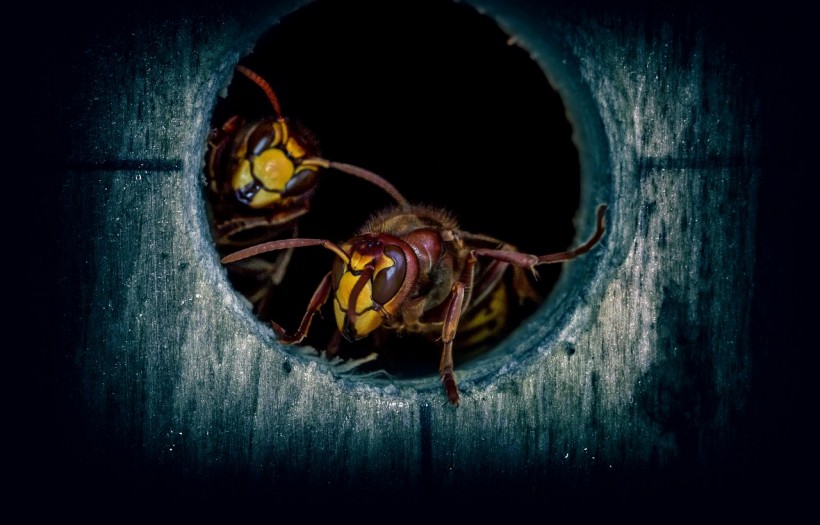Only female wasps have the tools needed to sting and poison predators. Therefore, people usually believe that male wasps have no defenses. However, a new study demonstrates how certain male wasps may avoid certain death by employing non-venomous, very spiky genitalia.

Over 39 months, invasive keyhole wasps, specifically the Pachodynerus nasidens at the Brisbane Airport,” were reportedly responsible for the 93 cases of ‘fully blocked replica pitot probes.’
On either side of the male mason wasp's (Anterhynchium gibbifrons) phallus are two slender, retractable "genital spines." Mason wasp males don't seem to employ these spines to keep females in place during mating, at least not in lab environments.
Live Science said male wasps only display their spiky phalluses when they sense a predator, such as a human scientist's hand.
Male Wasps Use Spiky Penis to Avoid Death
The outcomes of Dr. Shinji Sugiura and his team's research, published on Monday in the journal Current Biology, indicate that penis spikes could be useful for male wasps.
Male wasps do not sting with venom, The New York Times wrote. However, Sugiura - an ecologist at Kobe University in Japan - noted that their behavior is quite similar to female wasps. In fact, the scientists served a bunch of wasps with their genitalia removed to the frogs, and the frogs ate every single one without showing any distress.
ALSO READ: New Tiny Non-Stinging Wasps Discovered; Researchers Name the Insect Species 'Neuroterus Valhalla'
Unfortunately, the male wasps' incisive counterattacks weren't always successful. Fewer than a third of the tree frogs eventually gave up trying to consume the stinging bug allocated to them. Additionally, male wasps were still less effective than female wasps: The frogs disregarded almost half of the female wasps, which are larger than the males, right away, and of those whom wasps assaulted, an astounding 87.5 percent were effective in stinging.
Female Wasps Blamed For Spikes
The pseudo-stinging was probably a factor in the experiment's outcomes. Still, Justin Schmidt, a stinging insect expert at the Southwestern Biological Institute and author of the book "The Sting of the Wild," also believes that the frogs' relatively small size in comparison to the wasps and the size difference between male wasps and naturally larger females were likely contributing factors. Schmidt, who was not involved in the current research (per Scientific American), adds that it is not unexpected that wasps without their whole genitalia were less successful at repelling frogs, and he would want to see the experiment repeated with wasps with only the spines removed. He points out that dismantling the entire system may be "awfully unpleasant" for the wasps.
By mimicking the behavior of female wasps whose stings inject venom and cause substantial pain, male wasps may acquire an evolutionary advantage. According to Schmidt, a male wasp "doesn't actually have to perform the damage," to frighten a predator into spitting it out. It must deceive us into believing that it is causing harm.
Although hawk moths occasionally employ unique scales on their genitalia to make ultrasonic noises that are thought to deceive predatory bats, the authors of the research note that few other animal species have been demonstrated to use their genitalia as a defense strategy.
RELATED ARTICLE: Cannibal Baby Wasps Eat Their Siblings When Food Is Running Low [REPORT]
Check out more news and information on Wasps in Science Times.














